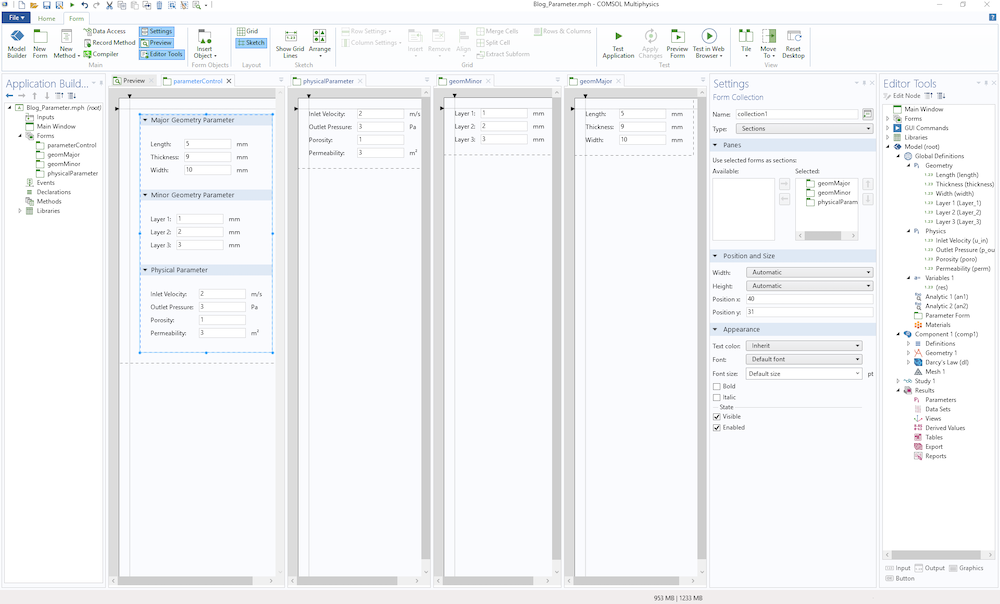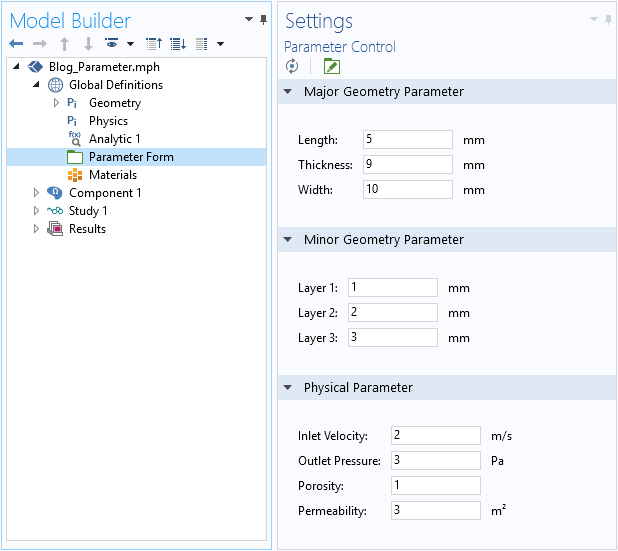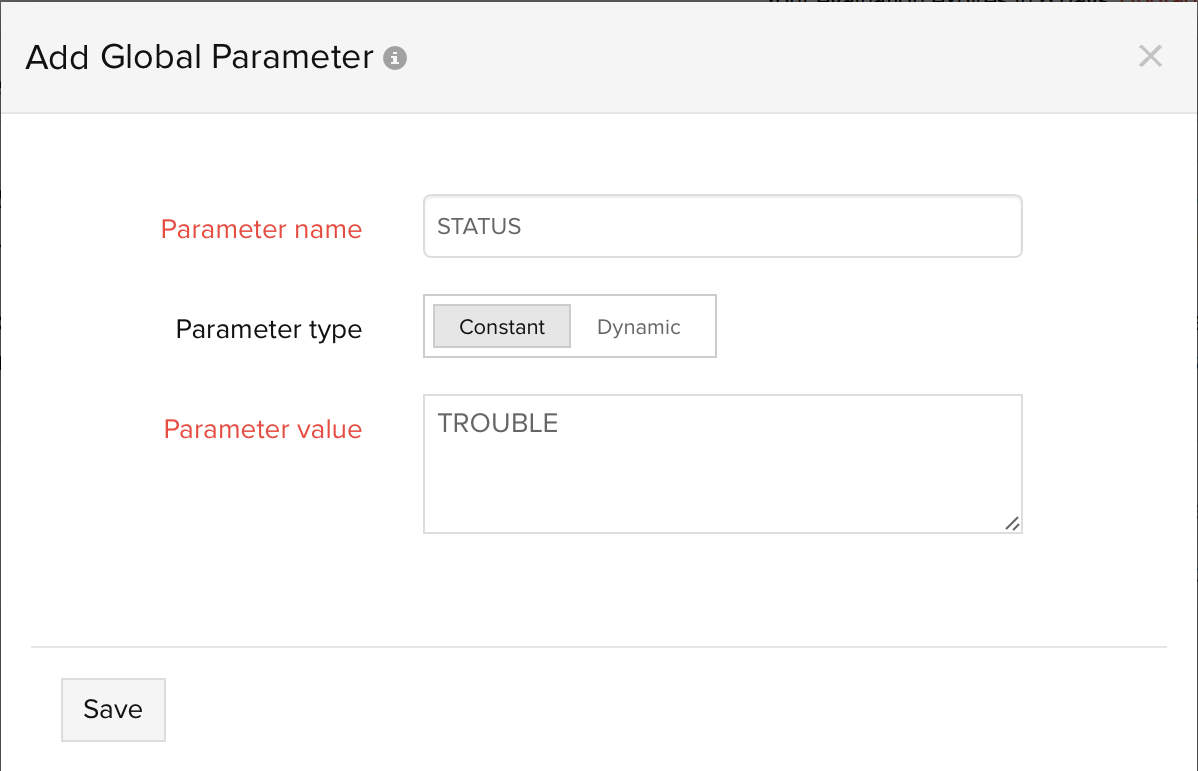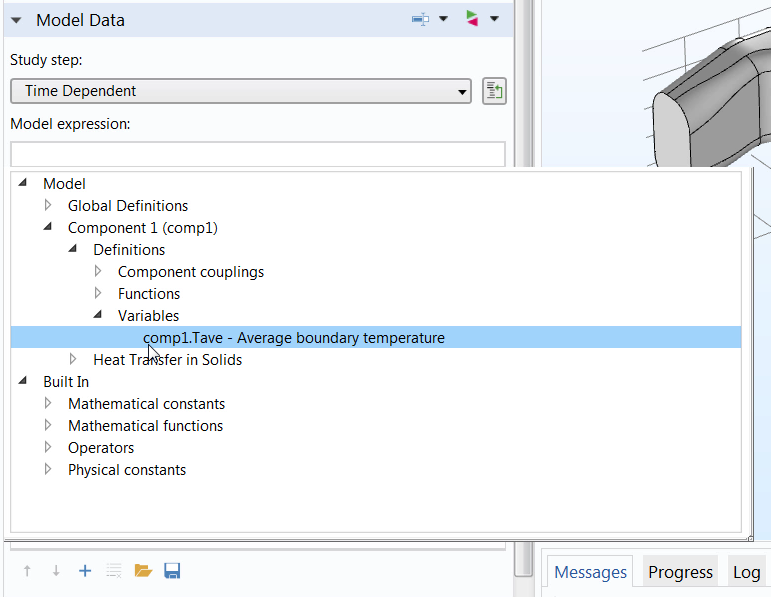
This means in fact that most variables are not globally constant and change their mining depending on how they are used, this is indeed easily confusing. time "t" or even other dependent or not variables T, p. Indeed variables are in fact mostly fields depending (implicit) on domain or BC index, spatial coordinates x,y,z, r. And COMSOL itself cannot use such a variable to define the geometry before starting a solver, if the variable depends on the solver results


#GLOBAL PARAMETERS IN COMSOL 5.1 HOW TO#
The thing is how to cut the loop, not always easy. This is on purpose and I find rather logic (but often overlooked )įor changing the geometry I believe DG is the way (so long you do not change the topology, but that also holds for the "external/full" Parametric Sweep. While "internal solver sweep" does NOT loop around the geometry, and the solvers, by default, restarts with previous step for the initial conditions. "External, or full" Parametric Sweep loops around the geometry and the mesh, and restarts all solvers from default initial conditions. That is a know feature ! (it's written somewhere in the doc): Do you think it is a probable case with using a local variable which is defined under Model>definitions>variables to cause a circular variable dependency in DG or do you think I should look for ways to modify my model? Yes, as a second step, I have tried the deformed geometry, however I couldn't stop Comsol complaining about circular variable dependency detection. After this, the global declaration is over writing the local variable (this is my guess) and the geometry only follows the parametric_sweep_variable. Click 1D to specify that the model will be one-dimensional.

I have found out that, in order to use a local variable in the parametric geometry, you should first declare it in the global definitions and give it an initial value so that Comsol can complete building the geometry. Second, we chose sampled parameters which yield minimum distribution of and use them as initial conditions for further local optimisation with a gradient-free coordinate search algorithm implemented in COMSOL. However, if my_significant_parameter is a local variable, the parametric geometry will not respond to the result of the my_significant_parameter*parametric_sweep_variable. Therefore you need to do something like my_significant_parameter*parametric_sweep_variable, so that you can trigger the geometry update. I have realized that in some physical models the geometry is not updated unless one of the the parameters (in your case "param") is defined in the parametric sweep range.

The shell interface is available with the Structural Mechanics Module.I believe we have tried to find the solution using the same logic. (The particular example shown here uses the shell interface in addition to the hygroscopic swelling feature. Moisture concentration and deformations in a MEMS pressure sensor due to hygroscopic swelling. The shell interface is available with the Structural Mechanics Module.) With this new multiphysics coupling, you are able to transfer a concentration of moisture, computed in the Transport of Diluted Species or Transport of Diluted Species in Porous Media interfaces, into a hygroscopic swelling strain. It has the same settings as the Hygroscopic Swelling subnode to the material model nodes. When Solid Mechanics is combined with one of the Transport of Diluted Species or Transport of Diluted Species in Porous Media interfaces, a new multiphysics coupling called Hygroscopic Swelling is created.


 0 kommentar(er)
0 kommentar(er)
